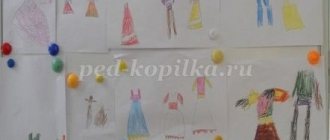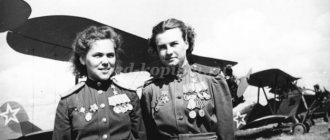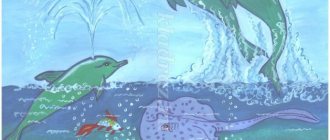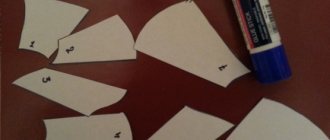Preview:
Municipal budget preschool institution
kindergarten No. 2 Neverkino
Lesson summary on the topic:
“Where there is water, there is life”
(acquaintance with the surrounding world
children of senior preschool age).
- Introduce children to the properties of water (taste, color, fluidity).
- Develop children's curiosity, thinking and speech; introduce the following words into the children's active dictionary: liquid, colorless, tasteless, transparent.
- Give an idea of the importance of water in human life and in nature.
- Foster respect for water.
Equipment: audio recording of surf noise; photographs of desert and forest; water in glasses; teaspoons; salt, sugar, milk; flannelograph, planar model of a river, streams, a person.
Children enter the hall and sit on chairs.
Educator: Children, look what I have in my hands?
Educator: Correct. What do you think the globe is a model of?
Educator: That’s right, this is a model of our planet earth. Tell me what color is the water? And what kind of land? What is more: sushi or water?
Educator: That's right - water.
Educator: Today we are going on a trip. And, since we have to sail along the river, let's choose some type of water transport. What types of water transport do you know? What will we choose? (children's answers: steamship, boat, yacht, cutter, catamaran, etc.) Close your eyes and listen to the water splashing overboard. A journey with several stops awaits us, and here is the first pier. We will stop and remember what we know about water.
1. Marina “Where there is water, there is life”
- What do we use water for every day?
- Why do you need to water indoor plants?
- How many days do you think a person can live without water?
Every living thing, including plants and animals, needs water. Without her, everything dies. For example, a person can live without water for only a few days (from three to seven). Take a look at these two pictures. This is what a desert looks like without water, but this is what the banks of a river or lake look like. (Show pictures.) Well, let's go further, another stop awaits us around the next bend in the river.
2. Pier “Where did the water come to us from?”
Listen to the droplet's story.
Educator: Once upon a time there was a small stream. He ran among forests and meadows. On the way, he met a stranger who was very similar to him.
“Who are you?” he asks.
- I am a trickle. And who are you?
“And I am a stream,” our stream answers. “Let’s be friends and flow on together.” Thus, the waters of many streams merged into one large and beautiful river. It rolls its waters for many kilometers, generously giving water to people along the way. A Man came to the river, admired its clear waters and asked the river to share its gifts. Man installed pumps to pump water from the river and supply it to the water supply system. But no matter how clean the water seemed to Man, grains of sand, particles of silt, and dirt still remained in it. In order to get rid of these “fellow travelers” of water, Man had to build treatment facilities and only after purification send the water on its further journey – to our water taps. This is how I, Droplet, came to you.
A droplet makes such a long and difficult journey, and it becomes precious because it costs a person dearly.
(during the teacher’s words, a river modeling is carried out).
Educator: How is a river born, do you want to know?
(places a wide and long strip of blue paper in front of the children).
The teacher conducts an experiment in water purification (experimental activity).
Educator: Let's try to clean the dirty water together. To do this, take a funnel, put a special filter cloth (made of cotton wool and gauze) into it and start passing dirty water through this funnel. Let's see what we can do?
We will conduct an experiment
We'll find clean water.
We will not allow dirt to pass through the filter,
So they can drink water!
Conclusion: after purification, the water became clean, but it is still not drinkable. It must be boiled and only then will it be suitable for drinking.
Educator: Yes, we cannot live without clean water. We only need clean water! Who else needs fresh water while reading?
Pier "Dance with Cloud"
Educator: A cloud has appeared on the horizon, let's look through our binoculars (children use their hands to make binoculars). Do you see the cloud?
Educator: What does a cloud consist of?
-From droplets of water.
Educator: Do you want to turn into droplets? One, two, three little bits of life.
A dance game is held with children.
Educator: Well, a cloud passed, gave everyone water to drink, nature came to life, and you and I continue our journey.
We stopped and now let’s get to know the water better and do several experiments with it.
Experience No. 1. "Water is a liquid"
Educator: Water is a liquid. It can be poured into anything: a glass, a bucket, a vase. It can be poured, poured from one vessel to another.
Experiment No. 2 “Colorless water”
On the teacher’s table there is a glass of water, a glass of milk, and a spoon.
Teacher: (dips spoon into milk) Guys, can you see the spoon? ( No ) . (puts the spoon in the water) Can you see the spoon now? (Yes).
Educator: What color is the milk? (white) What color is the water? (water has no color, water is colorless).
Experiment No. 3 “Water without taste”
Educator: And now I suggest you guys taste the water. What is she like? Sweet? Salty? Sour? Bitter?
Educator: Water has no taste, it is tasteless. Let's do a little experiment. Let's put the substance that is on our table in a glass of water. Stir and now taste the water. What did it taste like? (children's answers). What do you think I added to the water? (children's answers). It turns out that water can take on the taste of the substance that is put in it.
Today you learned a lot about water. Let's recap what you learned:
Water is a liquid.
Educator: Guys, do you need to save water? Why? (children's answers)
Lesson conclusion: For washing and cooking, only purified water is needed. And to get clean water, people spend a lot of work and effort. This is why you need to conserve water and close the tap tightly.
Source
MAGAZINE Preschooler.RF
Lesson on familiarization with the environment “What is the man-made world”(for children of senior preschool age)
MUNICIPAL STATE PRESCHOOL EDUCATIONAL INSTITUTION OF A COMBINED TYPE "KINDERGARTEN "CRANE" OF NADYM"
Prepared by senior teacher Chidanova I.V. Nadym
SOFTWARE CONTENT:
- consolidate: children’s understanding of the diversity of the objective world; the ability to correctly name objects of the man-made world; the idea that every object has its own purpose and function
- learn to describe an object, isolating its features using a description algorithm
- expand children’s knowledge about inventions that facilitate human work in everyday life, making life convenient and comfortable; pay attention to the fact that they serve a person, and he must take care of them
- teach to establish cause-and-effect relationships between the phenomena of life around us and an object that helps a person more easily endure the inconvenience associated with this phenomenon
- develop curiosity, resourcefulness, and ingenuity.
PROGRESS OF THE CLASS:
- Guys, I have incredible news for you. Today an airship - an airship - made a successful landing. Our guests are Master Samodelkin and his friend Dunno. Their visit to us is not accidental. Master Samodelkin really hopes for our help. He asks for help to explain to Dunno what a man-made world is. Can we help? (yes!) Well, we’ll go to the country “Man-Made World” on an airship.
— Boarding pass will be a word that refers to the man-made world.
(children say the word and go to their chairs)
“And we’ll give Dunno a pen and a notepad, let him write down all the most important things.”
Prepare to fly! Fasten belts! Attention! 5.4, 3, 2, 1!
Whip – whack – whack!
(children, when shown by an adult, perform a finger warm-up)
— The airship moves depending on the direction and strength of the wind.
“Blow low, blow close, blow high, blow far”
(children perform breathing exercises, music plays)
— Our flight went as usual, is the crew in a good mood? We arrived at the given coordinates. Big or small country “Man-made world” ? How did you understand this? (picture of a big city) Many different buildings.
—What kind of houses do you see? Show and name them correctly (single-story, multi-story).
- What are the houses made of? (made of brick - brick, made of wood - wooden, etc.) Show.
— What can’t you imagine being at home without? (without roof, walls, windows, doors)
—Who builds the buildings? For whom? (purpose - residential building, school, kindergarten, circus, sports palace, etc.) Why?
- Where can we see such houses? (in a village, city)
- So, which world do the houses belong to? Why?
- Look at the flow of cars moving through the city streets. Let's count how many cars are going to the right, to the left (orientation in space)
— Each machine does its job. Some are responsible for transporting people. These are taxis, buses, trolleybuses, trams (children name and show) Others transport goods.
D/I “Name it in one word”
— Name in one word a machine that:
Carries milk - ..., mixes concrete - ..., carries water - ..., crushes stones - ..., carries bread - ...
— Guys, tell me, are there cars that everyone gives way to? Name them correctly. Special vehicles - ambulance, police, fire truck.
- Let's find out what Dunno wrote in his notebook.
D/I “Correct the sentences”
The house pulled up next to the car.
The gas ran out because the car stopped.
The car drives along a city street.
The passenger takes a ticket from the conductor for the bus.
— Who invented and made all these machines? For what? What world does technology belong to?
PHYSICAL MINUTE
— Thank you, Dunno, for the fun warm-up! We didn’t even notice how we ended up at the store window. Look carefully and tell me what it is called (clothes - shoes).
- Tell me, what do we call clothes? Shoes?
D/I “Guess what I’m talking about”
Back, sleeves, front, cuffs, collar, pockets, buttons - shirt
Pants legs, pockets, button, lock, belt - trousers
Sleeves, pockets, zipper, fur lining, collar - coat, fur coat
— How can you tell about shoes?
— Let's remember the materials from which clothes and shoes are made (chintz, knitwear, drape, cotton; leather, wool, fur).
- Name the clothes that are knitted and sewn.
- Who sews clothes? For what? Clothes and shoes are objects of which world?
- What is this strange drawing in front of us? Look carefully, maybe you can guess.
— Master Samodelkin led us to the alley of tools and materials (picture)
— Guys, how many of you know why people need these and many other tools? (to perform labor actions and make many necessary and useful items).
D/I “What are we doing with what?” (ball game)
We dig the ground - with a shovel; We chop wood - with an ax; We hammer in nails - with a hammer; We unscrew or tighten a bolt - with a screwdriver
We cut boards with a saw, we cut paper with scissors, we pierce a hole with an awl, we write in a notebook with a pen.
We draw a table with a ruler, we paint a fence with a brush, we sew a dress with a needle
— If an object is made of rubber, it is rubber (they give an example), if it is made of plastic, it is plastic, if it is made of paper, it is paper, if it is made of metal, it is metal, if it is made of wood, it is wooden, if it is made of polyethylene, it is polyethylene, if it is made of glass, it is glass.
“We didn’t even notice how we ended up on the Square of Inventions.”
“There are objects with which a person works, and there are also objects that make a person’s work easier.” Guess them together with Dunno.
A house on legs, with a window in the middle. The window will light up - a movie (TV) will appear.
Walks, wanders along the carpets, moves his nose in the corners. Wherever I went, there was no dust. Dust and rubbish are his lunch. He willingly inhales dust, does not get sick, does not sneeze (vacuum cleaner)
In Linen Country A steamboat floats along the Sheet River, back and forth. And behind it there is such a smooth surface - Not a wrinkle to be seen (iron)
They knock, they knock - They don’t tell you to be bored, They go, they go - And everyone is here and there (clock)
Admire, look - the North Pole is inside! Snow and ice sparkle there, Winter itself lives there, This winter is forever for us Brought from the store (refrigerator
- Name what other human inventions you know. What are they for (dishwasher, washing machine, microwave oven, hair dryer, mixer, food processor, heater, etc.)?
— We are returning to the airship along the Street of Comparisons
D/I “It’s similar - it’s not similar”
Horse - bicycle Tree - chair Airplane - bird Clock - rooster
— Traveling around the country The man-made world is coming to an end. It's time for us to return. Do you think Dunno now understands what a man-made world is? How do you understand this yourself? (children's answers) That's right, what a person made with his own hands or with the help of tools, what improves, facilitates or makes his life comfortable is called the man-made world.
“Man-Made World” more than once .
Summary of the lesson. Assessment of children's activities.
As a souvenir of the trip, the children receive coloring books with objects from the man-made world.
Bibliography
- Dybina O.V. Man-made world: scenarios of game-activities for preschoolers. Creative. Moscow, 2002
- Volchkova V.N., Stepanova N.V. Lesson notes for the senior group of kindergarten. Cognitive development. Practical guide for educators and methodologists of preschool educational institutions. Shopping center "Teacher" . Voronezh, 2005
- Kibitina I.I. Preschoolers about technology. Moscow "Enlightenment" , 1991.
| Next > |
Abstract of GCD on the surrounding world “Water Sorceress” in the senior group
ALIYEVA ASIYAT
Summary of educational activities on the surrounding world “Water Sorceress” in the senior group
Abstract of the GCD on the surrounding world “ Water Sorceress ” in the senior group .
Program content: introduce children to the properties of water (taste, color, smell, fluidity)
.
Draw children's attention to the importance of water in our lives. To consolidate children's knowledge about where and in what form water exists in the environment .
Develop curiosity, thinking, memory, attentiveness. Vocabulary work: introduce into the children's active vocabulary: liquid, colorless, tasteless, transparent. Get used to answering with a complete answer.
Materials and equipment: Equipment for experiments: glasses of water (according to the number of children, empty glasses, salt, sugar, potassium permanganate, spoons, a basin, vessels of various shapes, a white sheet of paper, cups of milk, napkins, symbols indicating the properties of water.






